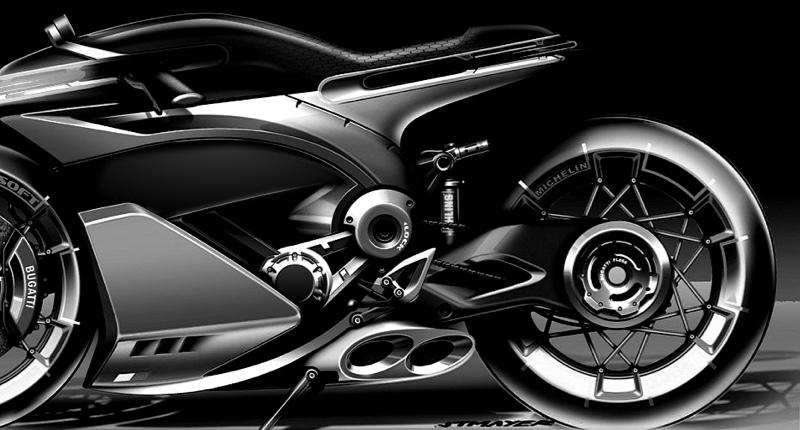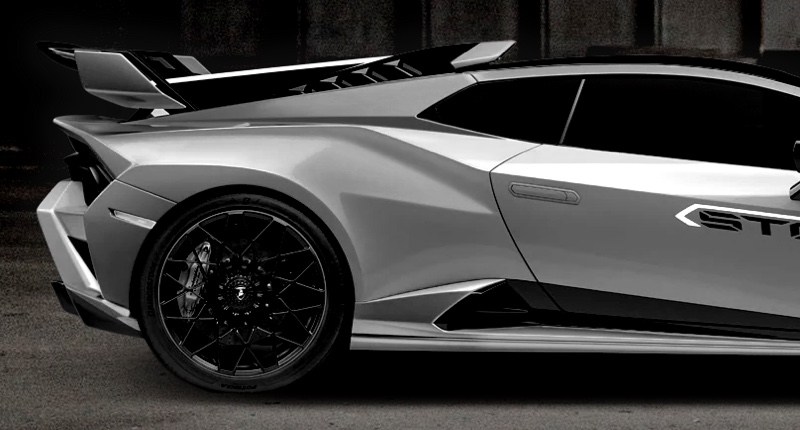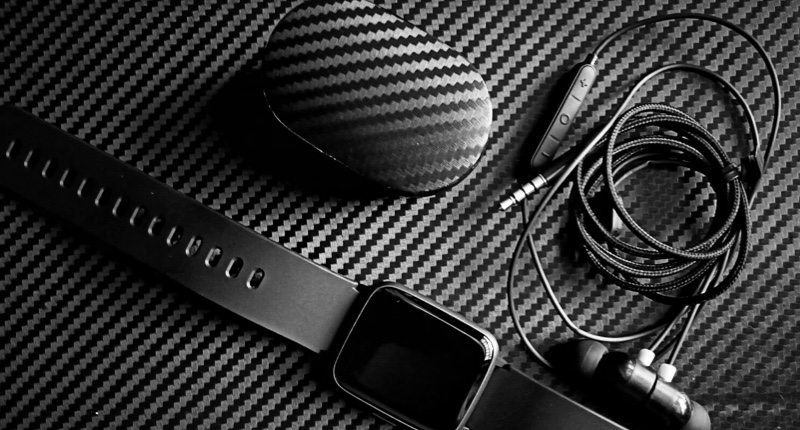Top Manufacturing Methods for Custom Carbon Fiber Parts
- Top Manufacturing Methods for Custom Carbon Fiber Parts
- Introduction: What users search for and why methods matter
- Why manufacturing method selection matters for custom carbon fiber parts
- Overview of the top methods used in the industry
- Prepreg + Autoclave: High Quality finish and repeatable mechanical properties
- Resin Transfer Molding (RTM): Good for medium volumes and complex shapes
- Vacuum Infusion: Cost-effective for larger parts with good mechanical properties
- Hand Lay-up and Open Mold: Flexible and low upfront cost
- Compression Molding & Sheet Molding Compounds (SMC): Fast for high-volume parts
- Filament Winding and Automated Fiber Placement (AFP): Specialized structural parts
- How to choose: matching method to volume, cost and finish
- Direct comparison: Methods table
- Quality control, testing, and finishing considerations
- Cost drivers and how to minimize risk
- Why Supreem Carbon is positioned to deliver your custom carbon fiber parts
- Practical steps to get a quote and reduce lead time
- Conclusion: Apply the right method for best value
- Frequently Asked Questions
- Sources and references
Top Manufacturing Methods for Custom Carbon Fiber Parts
Introduction: What users search for and why methods matter
When searching for Top Manufacturing Methods for Custom Carbon Fiber Parts, buyers are usually deciding which production route best balances quality, cost, lead time and repeatability for automotive or motorcycle components. This article explains the main carbon fiber manufacturing methods, compares them side-by-side, and gives practical guidance to choose the right approach for custom carbon fiber parts and accessories. Whether you need aftermarket automotive trim, motorcycle fairings, luggage, or sports equipment, understanding these methods helps reduce risk and cost while ensuring performance.
Why manufacturing method selection matters for custom carbon fiber parts
Choosing the correct manufacturing method directly affects part strength, surface finish, weight, tooling cost, and unit price. For automotive and motorcycle carbon fiber parts, customers often prioritize visual finish (visible weave), low weight, dimensional accuracy, and repeatable fitment. Using the right manufacturing method ensures your part meets functional requirements and offers good value across production volumes.
Overview of the top methods used in the industry
The primary manufacturing methods for custom carbon fiber parts are: prepreg/autoclave, resin transfer molding (RTM), vacuum infusion, hand lay-up (including molds and gelcoat), and compression molding (for sheet-molded composites). Each method has strengths and trade-offs depending on production volume, complexity, finish, and cost.
Prepreg + Autoclave: High Quality finish and repeatable mechanical properties
Prepreg (pre-impregnated carbon fiber) cured in an autoclave is the gold standard for high-performance parts where surface finish, fiber volume fraction, and strength are critical. This method delivers excellent cosmetic quality — often used for visible automotive trim, bonnet inserts, motorcycle fenders, and performance components. While tooling and autoclave cycle costs are high, prepreg/autoclave provides tight tolerances and consistent mechanical properties for low-to-medium production runs.
Resin Transfer Molding (RTM): Good for medium volumes and complex shapes
RTM injects resin into a closed mold containing the dry fiber preform. It produces parts with consistent thickness, good surface finish on both faces, and is well-suited to medium-volume production of complex geometry parts (e.g., integrated motorcycle fairings, structural brackets). Tooling costs are moderate to high, but RTM offers shorter cycle times than autoclave in repeat production.
Vacuum Infusion: Cost-effective for larger parts with good mechanical properties
Vacuum infusion pulls resin through dry fiber laid in a one-sided mold under a vacuum bag. This method reduces void content compared with hand lay-up, can produce large, lightweight parts, and keeps tooling cost lower than closed-mold processes. It’s commonly used for larger panels, luggage shells and low-to-medium volume runs where a good strength-to-weight ratio is needed without the expense of autoclave processing.
Hand Lay-up and Open Mold: Flexible and low upfront cost
Hand lay-up is the most flexible and lowest-cost method for prototyping and very small production runs. Technicians place dry or wet fiber into open molds and manually apply resin. It’s ideal for custom one-off parts, design validation, and small-batch modifications. Surface finish and repeatability are limited compared with closed-mold techniques, so hand lay-up is generally used for parts where top-tier cosmetic finish isn’t required or for early-stage prototypes.
Compression Molding & Sheet Molding Compounds (SMC): Fast for high-volume parts
Compression molding and SMC processes use preformed sheets or charges compressed in matched molds. They enable rapid cycle times and are suitable for high-volume components when part shapes are compatible. While not always used for visible luxury finishes, compression molding provides mature, repeatable manufacturing for high-volume exterior or structural parts when combined with surface finishing or thin decorative overlays.
Filament Winding and Automated Fiber Placement (AFP): Specialized structural parts
Filament winding and AFP are automated processes used for highly-engineered structural components (tubes, beams, and complex laminates). AFP can place fibers precisely for optimized load paths — ideal for racing subframes or structural motorcycle components. These are generally higher-investment techniques suitable for customers needing engineered performance gains rather than purely cosmetic accessories.
How to choose: matching method to volume, cost and finish
Choosing the right manufacturing method requires balancing four variables: unit cost, tooling cost, lead time and surface finish. For prototypes and very small runs, hand lay-up or prepreg prototypes are effective. For aesthetic, low-volume High Quality parts, prepreg/autoclave is preferred. For medium volumes with complex geometry, RTM is efficient. For large parts where tooling cost is a concern, vacuum infusion is attractive. For high-volume repeat parts, compression molding or SMC is typically best.
Direct comparison: Methods table
| Method | Typical volume | Surface finish | Tooling cost | Lead time (per part) | Best use |
|---|---|---|---|---|---|
| Prepreg + Autoclave | Low–Medium | Excellent (visible weave) | High | Hours–Days | High Quality cosmetic & structural parts |
| RTM | Medium | Good–Very Good | Moderate–High | Minutes–Hours | Complex shapes, medium runs |
| Vacuum Infusion | Low–Medium | Good | Low–Moderate | Hours | Large panels, lightweight shells |
| Hand Lay-up | Prototype & Small | Variable | Low | Hours–Days | Prototypes, custom one-offs |
| Compression Molding / SMC | High | Good (with finishing) | High | Minutes | High-volume structural/exterior parts |
Quality control, testing, and finishing considerations
Quality control for carbon fiber parts includes visual inspection, dimensional verification, ultrasound or X-ray for internal defects, and mechanical testing per relevant standards (e.g., ASTM test methods for tensile and flexural properties). Surface finishing (clear coat, matte finish, or painted overlays) also influences perceived quality — prepreg/autoclave parts often require minimal finishing, while RTM and infusion parts may need sanding and clear coating.
Cost drivers and how to minimize risk
Main cost drivers are tooling, materials (prepreg vs. dry fiber + resin), labor, and secondary finishing. To minimize risk: validate geometry with prototypes, choose the correct process based on projected volume, negotiate material sourcing, and work with an experienced manufacturer who can advise on balancing cost and performance.
Why Supreem Carbon is positioned to deliver your custom carbon fiber parts
Supreem Carbon, established in 2017, combines R&D, design, production and sales to deliver high-quality custom carbon fiber parts for automobiles and motorcycles. With a 4,500 m² factory, 45 skilled staff and an annual output value near $4M, Supreem Carbon offers over 1,000 product types and more than 500 customized parts. Our capabilities span prepreg/autoclave, RTM, vacuum infusion and hand lay-up, allowing us to match method to product requirements and customer budgets for both prototypes and production runs.
Practical steps to get a quote and reduce lead time
To get an accurate quote from a manufacturer: prepare 3D CAD files (STEP/IGES), specify target mechanical and cosmetic requirements, estimate annual volumes, and define acceptable lead times. Early collaboration on tooling design and material choice can reduce rework, lower unit costs and shorten time-to-market.
Conclusion: Apply the right method for best value
There is no single best manufacturing method for custom carbon fiber parts — the right choice depends on required finish, structural needs, production volume and budget. Use prepreg/autoclave for High Quality visible parts, RTM for complex medium-run components, vacuum infusion for large lightweight shells, and hand lay-up for prototypes. Work with a manufacturer like Supreem Carbon that can advise on trade-offs and execute the chosen process with consistent quality.
Frequently Asked Questions
Q: What is the fastest way to get a high-quality prototype of a carbon fiber part?A: Use prepreg with autoclave curing for best cosmetic finish and accurate mechanical properties; hand lay-up is faster and cheaper for non-cosmetic prototypes.
Q: Which method gives the best visible carbon weave finish?A: Prepreg cured in an autoclave typically yields the best visible weave and gloss with minimal post-processing.
Q: How do I choose between RTM and vacuum infusion?A: Choose RTM for medium volumes and complex closed-mold parts with consistent two-sided finishes; choose vacuum infusion for larger panels where lower tooling cost is important.
Q: What turnaround times can I expect for custom parts?A: Prototype parts often take 1–4 weeks depending on tooling; small production runs can take 2–8 weeks. Exact times vary by process and backlog.
Q: Can Supreem Carbon handle both small custom runs and larger production?A: Yes. Supreem Carbon’s combined R&D and manufacturing capabilities allow support from prototyping through medium-volume production across multiple methods.
Sources and references
- CompositesWorld — industry coverage on RTM, infusion, and prepreg practices.
- Society of Automotive Engineers (SAE) — technical papers on composite manufacturing for vehicles.
- ASTM standards — commonly used test methods for composite tensile and flexural testing (e.g., ASTM D3039).
- Grand View Research / MarketsandMarkets (industry reports) — market trends and typical CAGR estimates for carbon fiber composites.
- Supreem Carbon company data (factory size, staff, product range) — supplied by company profile.
Carbon Fibre Custom Made Parts for Your Project Car
What are the application scenarios of carbon fiber cello?
Manufacturing Process: Dry Carbon vs Wet Carbon

Boost Your Performance with High-Quality Carbon Fiber Race Parts
For Products
Which carbon fiber material you can provide in production?
1*1 plain /2*2 twill / forged carbon / honeycomb / kevlar and so on.
Are you parts have UV protected?
Absolutely! We use multiple layers of premium quality automotive clear (or matt) coats on our products, which ensure that they will remain super pretty for years to come.
How can I get some sample?
Actually we dont provide the free sample to customer, you can place a sample order if need some parts.
For After-sales Service
What can I do if the carbon fiber products arrived is broken?
Please give us feedback as soon as possible and we will send new one to you.
For Facotry
Supreem carbon main competitive advantages.
Rich experience
Over 10 years production experience in carbon fiber industry, providing customers with high quality carbon products.
Excellent service
From new project development to customer finished product delivery, we provide customers with full tracking and timely feedback on project progress.
High-Quality Products
Our carbon fiber products undergo rigorous quality control to ensure customers achieve the high quality and cost-effective product.

Yamaha R1 Carbon Fiber Side Fairings
Introducing the Supreem Carbon Fiber Long Side Panels for Yamaha R1. Crafted with precision and expertise, this front side fairing is designed to elevate the performance and aesthetics of your R1. Made from high-quality carbon fiber, this fairing is not only lightweight but also incredibly durable, providing optimal protection for your motorcycle.

Yamaha R1 Carbon Fiber Airbox Tank Cover
The Supreem Carbon Yamaha R1 Carbon Fiber Airbox Tank Cover provides lightweight, durable protection with a sleek finish. Designed for R1 models, it enhances the style and performance of your bike. Its lightweight structure improves performance while maintaining the premium aesthetics necessary for high-end modification projects. As a dedicated manufacturer of carbon fiber parts, we provide stable production capacity, customization options, and strict quality control to support enterprise-level procurement and OEM/ODM needs.

Carbon Fiber Rear Seat Panel for BMW S1000R & M1000RR – Lightweight Performance
This carbon fiber rear seat panel is engineered for the BMW S1000R and M1000RR, offering superior rigidity, reduced weight, and a premium racing finish. Produced with autoclave technology and strict QC standards, the part ensures consistent OEM-level fitment. Supreem Carbon provides wholesale supply, stable bulk production, and customized solutions for global clients.

High-Performance Carbon Fiber Rear Undertail for BMW S1000R
Engineered for distributors, tuning brands, and motorcycle accessory businesses, the BMW S1000R Carbon Fiber Rear Undertail is a high-quality, durable, lightweight carbon fiber upgrade for the S1000R platform. This component is manufactured using aerospace-grade carbon fiber and precision molds to deliver superior stiffness, a seamless OEM-level fit, and a premium visual finish suitable for high-end aftermarket applications.
© 2024 Supreem Carbon All Rights Reserved.





Facebook
Pinterest
LinkedIn
Instagram